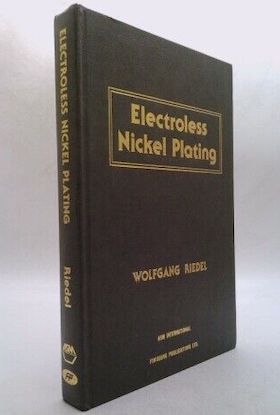
Curated with aloha by
Ted Mooney, P.E. RET

The authoritative public forum
for Metal Finishing 1989-2025

-----
Cleaning sheet metal for EN plating
Q. I am looking for suggestions for preparing sheet metal for electroless nickel plating. Certain sheet metals come into our shop with a compound from forming operations that cannot be removed with a standard cleaning cycle (soak clean, electroclean, muriatic acid). I have tried numerous different cleaners, but nothing seems to work. Degreasing seems to just "bake" the soil on. The plating adhesion is fine, but the compound leaves a cloudy pattern in the electroless plating. Hand wiping the compound with a dry rag or glove helps, but I would like to avoid this labor intensive operation. Interestingly, the same parts ran in other plating finishes leaves no patterns.
Thank you,
Keith Rosenblumplating shop - St. Paul, Minnesota
2003
A. Check to see if periodic reverse might help. It would probably require some modification of the electroclean tank chemistry.
James Watts- Navarre, Florida
2003
Q. Periodic reverse is part of our standard cleaning cycle. Even with this, the compounds cannot be removed.
Keith Rosenblum [returning]plating shop - St. Paul, Minnesota
2003
A. Unfortunately, alkaline cleaning does not work on all soils. The first thing I would do is work with your alkaline cleaner vendors Tech Services. You might be able to send them a couple of scrapped parts to play with to tweak the chemistry. A very well designed and well operated vapor degreaser is probably the real answer. Trichloroethylene is practical in most areas. It is very cost effective if done well and very costly if not done well.
James Watts- Navarre, Florida
2003
Just curious James, but do you agree with what Keith is saying that the soil is copying through the plate after the EN cycle, and that the plate has good adhesion? In other words he is actually plating on top of that "soil". I don't understand how can this be, I've never seen a properly adhered EN over soiled substrate. Obviously, passivation is used to separate electroforms but it is not considered a soil. Could it be that the haze is not soil but some sort of microroughness caused by oxidation or corrosion?
Guillermo MarrufoMonterrey, NL, Mexico
2003
Response to G. M. -You are correct, that it will not plate over a continuous soil, but the soil can be intermittent enough to activate at thousands of sites and then encapsulate the tiny soil spots.The rougher surface would give the "cloudy" look. Especially on a bright plate on a flat surface. I doubt if it would be uniform. A little less soil and it might not be noticed. A little more and you would have a skip plate. Without seeing the parts and the process, it is a poorly educated guess.
James Watts- Navarre, Florida
2003
A. Keith,
Interesting is that these parts run in your other lines do not leave the pattern. So zinc plate them first in one of your cyanide zinc lines and strip them and then send them over for EN. Extreme maybe but it would help point to the problem. If this were to work then Endox with P.R. would solve the problem. Have you called Pat H and asked for DB (Detergent Booster)? Have you called Doug F and asked for George W to pay a visit? Tell Pete Jon say Hi.
Jon Quirt- Minneapolis, Minnesota
2003
Q, A, or Comment on THIS thread -or- Start a NEW Thread

